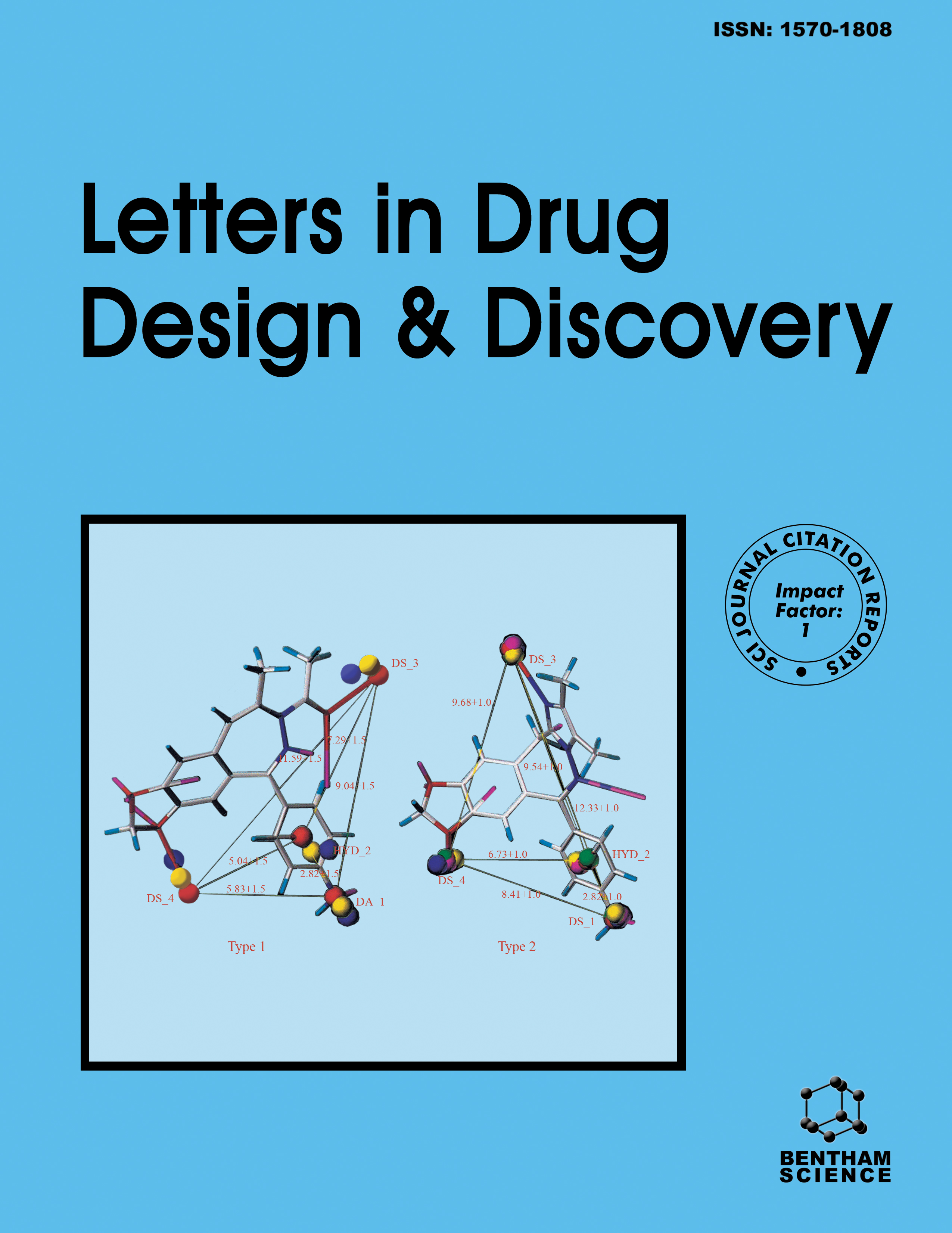-
s Synthesis and Antimicrobial Activity of New Pyrimidine-Hydrazones
- Source: Letters in Drug Design & Discovery, Volume 11, Issue 1, Jan 2014, p. 76 - 81
-
- 01 Jan 2014
Abstract
The synthesis of twelve new pyrimidine hydrazone derivatives and subsequent evaluation of their antimicrobial activities were the aims of this present work. The intermediate product 2-[(pyrimidin-2-yl)thio]acetohydrazide was refluxed with different aromatic aldehydes/ketones in ethanol to yield N’-(arylidene)-2-[(pyrimidine-5-yl)thio]- acetohydrazide derivatives (3a-l). The structures of the compounds were elucidated by NMR, FTIR, MS, and elemental analyses. Additionally the final compounds (3a-l) were evaluated for their antimicrobial activity using a microdilution method against a panel of pathogenic Gram positive, Gram negative, and fungus strains, i.e. Escherichia coli, Pseudomonas aeruginosa, Salmonella typhimurium, Bacillus cereus, Bacillus subtilis, Serrratia marcescens, Staphylococcus epidermidis, and Candida utilis. Compound N’-(2-pyrilidene)-2-[(pyrimidine-5-yl)thio]acetohydrazide (3a) possessing a 2- pyridyl moiety was found to be the most active (MIC= 31.25-250 μg/mL) derivative toward the tested microorganisms.


